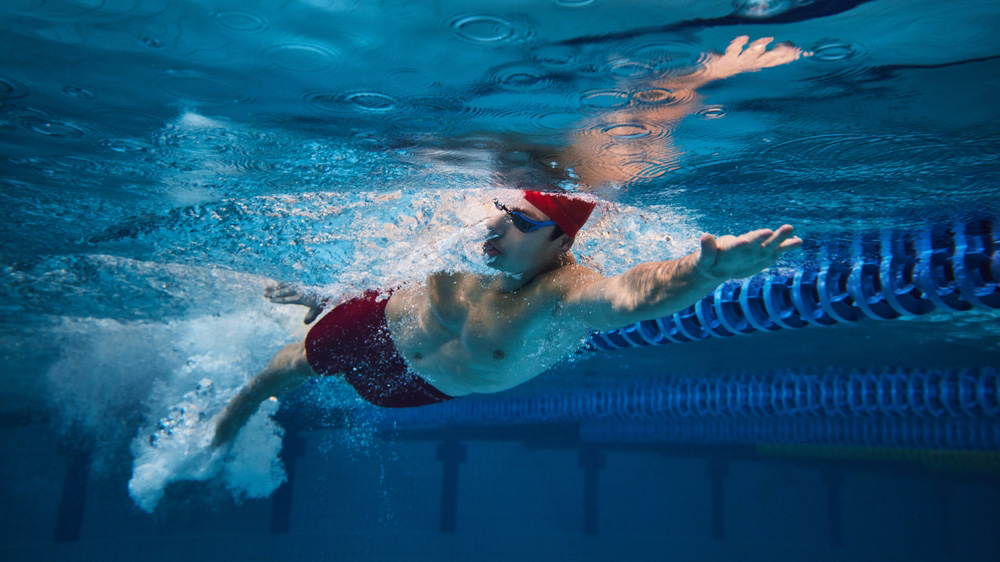Swimming, with its fluid and graceful nature, is far more than just a fun summer activity. Did you know that the gentle rhythm of swimming is one of the most effective cardiovascular exercises to boost your physical health? Gliding through the water and moving like a fish is an enjoyable way to care for your heart while toning your body. In this article, we’ll explore how swimming immerses you in a sea of health benefits, far beyond simply staying afloat.
Swimming and Heart Health: A Dynamic Duo
Often hailed as a full-body exercise, swimming engages almost every muscle while providing an excellent cardiovascular workout. Unlike many other sports, swimming is a low-impact activity. This means it reduces the risk of injury while offering numerous benefits for the heart, lungs, and even the mind.
Every stroke, every kick requires coordination between your muscles, breath, and stamina. Here’s where the magic happens: your heart works steadily, pumping blood to supply oxygen to your muscles, while your lungs maintain a rhythmic breath. This combined effort makes swimming incredibly beneficial for your cardiovascular system.
Burn Calories Without Realizing It
Your heart, that tireless engine, finds a perfect companion in swimming. The repetitive movements in water boost blood circulation, strengthening the heart muscle. According to research published in the International Journal of Aquatic Research and Education, regular swimming can lower blood pressure and improve overall heart function. That’s not all: it also helps reduce LDL cholesterol (the “bad” kind) while boosting HDL cholesterol (the “good” kind).
As you swim, your heart becomes more efficient, pumping more blood with each beat. This means it beats less frequently while maintaining optimal circulation. Over time, this translates to a reduced risk of cardiovascular diseases like hypertension, heart attacks, and strokes.
Minimal Impact, Maximum Benefits
One of swimming’s greatest strengths lies in its low impact on joints. Unlike running or aerobics, where repetitive impacts can strain joints, swimming allows for intense exercise without the risk of joint pain. This is especially beneficial for individuals with arthritis, joint pain, or those recovering from injuries.
Water’s natural buoyancy reduces stress on joints and muscles, allowing for a greater range of motion that improves flexibility and mobility. For older adults or those with physical limitations, this physical activity is often recommended as a safe, effective way to stay active without risking further injury.
Mental Well-being: Serenity Within Reach
Beyond its physical perks, swimming plays a key role in mental well-being. The calming effect of water, combined with the regularity of strokes and controlled breathing, promotes relaxation and helps reduce stress and anxiety. A study from Indiana University found that regular swimmers report improved mood, lower levels of depression, and better sleep quality.
Water acts like a protective cocoon, cutting off external distractions and allowing for active meditation. Immersion in water can trigger the parasympathetic nervous system, responsible for relaxation, digestion, and rest, in contrast to the stress-inducing sympathetic system. Swimming in groups or clubs can also foster a sense of community and offer a fulfilling social experience.
Swimming and Longevity: A Fountain of Youth?
It’s no exaggeration to say that swimming could be a key to living a longer, healthier life. Research from the University of South Carolina revealed that regular swimmers have a 50% lower mortality rate compared to non-swimmers. This study, which followed over 40,000 men for 32 years, showed that swimming is one of the most effective activities for extending lifespan.
The secret lies in the unique combination of cardiovascular, muscular, and mental benefits. This activity not only improves physical and mental health, but it also boosts the immune system, helping the body fend off illnesses and stay in shape, even in old age.
Styles for Every Preference
Whether you prefer the butterfly, breaststroke, or a quick freestyle, each swimming style offers its own benefits. Freestyle, with its fast and fluid movements, strengthens back and arm muscles, while breaststroke targets the legs and promotes controlled breathing. Backstroke, meanwhile, enhances posture by strengthening the often-neglected back and shoulder muscles.
For those seeking a less intense but still effective workout, swimming at a moderate pace is ideal for boosting cardiovascular fitness without overexerting the body. By alternating styles, you can create a balanced workout that targets all areas of the body while keeping things interesting.
Conclusion
Swimming is far more than just a summer hobby or a fun pastime. It’s a powerful tool to enhance and maintain cardiovascular health, strengthen muscles, burn calories, and calm the mind. No matter your age or fitness level, it offers a safe, effective, and enjoyable way to take care of yourself—all while having fun. So, dive into the water and let yourself be carried by the endless benefits of this complete sport.
References
- Harvard Health Publishing. Swimming for Heart Health
- US Masters swimming. Why Swimming is Good for Your Heart
- Mayo Clinic. Swimming: Benefits for Health
- Centers for Disease Control and Prevention (CDC). Benefits of Physical Activity: Swimming
- Cleveland Clinic. Swimming: The Ultimate Cardio


